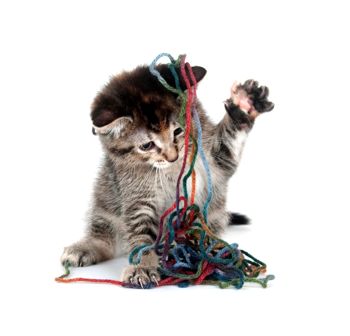A magazine where the digital world meets the real world.
On the web
- Home
- Browse by date
- Browse by topic
- Enter the maze
- Follow our blog
- Follow us on Twitter
- Resources for teachers
- Subscribe
In print
What is cs4fn?
- About us
- Contact us
- Partners
- Privacy and cookies
- Copyright and contributions
- Links to other fun sites
- Complete our questionnaire, give us feedback
Search:
Playing with robots
by Paul Curzon, Queen Mary University of London

There are many, many toys to play with these days that contain computers. That means toys are getting more intelligent. Toys are starting to be able to play with us rather than just being played with. But why do children play? Given how much we do it, play must be important! Many animals play too and often seem to be having as much fun as us. To have evolved, play must increase their chances of survival somehow. Could it be giving a creative edge?
Play is partly about practising skills that will be useful in the future, partly about building strength. A kitten that constantly plays at pouncing on things will become a much better hunter. An active child will grow up fitter than a couch potato who never runs around a playground. Is there more to it than that though? Patrick Bateson of the University of Cambridge and Paul Martin of King’s College London think it could be about creativity too.
We mean lots of different things when we talk about play – playing in your first Wimbledon final is all-together different from having a fun pillow fight. Similarly, when Gareth Bale is bearing down on goal having stormed the length of the pitch, it’s unlikely he’s feeling playful. That kind of aggressive, competitive play doesn’t seem to be linked to creativity. Playful play is though. What matters for creativity seems to be a playful mood – feeling positive and light-hearted – more than the activity itself.
Researchers have found that the more playful kinds of animal, like dolphins, that seem to play for the sake of playing, are also the most creative in coming up with novel ways to do things. Dolphins naturally play in dozens of ways: from playing with bubble rings to playing with seaweed. They are also great at coming up with new things to do and new ways to solve problems set them.
By playing, humans and animals alike may have more chance to experience situations and generate ideas that will help to solve novel problems in the future. They may be exercising their brain as well as their muscles. In the wild, for example, dolphins often use curtains of bubbles to trap fish to eat – just like the ones they play with! Perhaps it was bubble play that gave them the fishing idea.
Play does seem to enhance the creativity of children. The jury is still out on whether it leads to adults being more creative too – lots more research is needed to find that out for sure. What is certain is that successful companies don’t just want to employ hard-working intelligent people. They want their workers to be creative too and many high tech companies that rely on innovation, and so the creativity of their staff, already actively try and foster playfulness. Google is perhaps the best example. The company plays with its logo daily and its offices are famous for the playful atmosphere. You do not have to stop playing just because you grow up. People who see work as a place to play may well be the most valuable employees a company has.
Now, if play is important in helping both humans and animals be creative, then perhaps we should be creating machines that are playful too. Perhaps the intelligent machines of the future will need to play to achieve their own potential just as much as we do. Robots are likely to be our children’s playmates in the future. Maybe the robots will need playmates as part of their growing up too.


